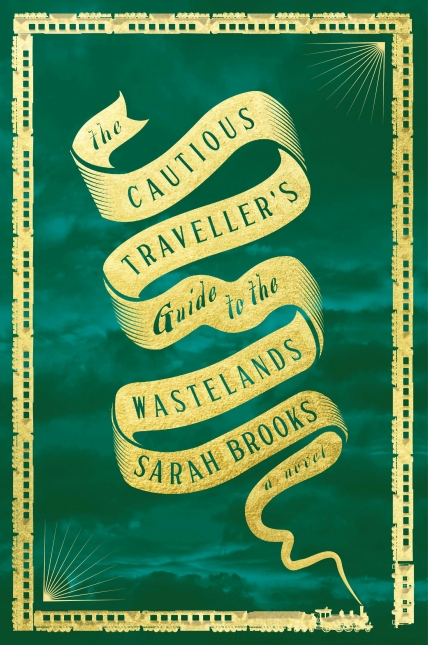The Cautious Traveller’s Guide to the Wastelands: A Novel
- By Sarah Brooks
- Flatiron Books
- 336 pp.
- Reviewed by Mariko Hewer
- July 12, 2024
Excessive ambiguity derails this ambitious train tale.

Sarah Brooks’ debut novel is certainly ambitious, attempting to tell a fantastical tale of grandiose design and interlacing narratives. Unfortunately, the multiple points of view prevent the reader from caring much about any one character — indeed, the characters are often impenetrable — while the overall structure remains convoluted until the end.
The Cautious Traveller’s Guide to the Wastelands features the real-life Trans-Siberian Express, whose Beijing-to-Moscow route is here rendered as a strange, hallucinatory expanse called “the Wastelands,” where nothing is as it seems and nobody is safe. Its passengers are aboard for various reasons. Marya seeks to exonerate her father, a glassmaker deemed responsible for the train’s most recent journey, which ended in disaster. The Professor hopes to spend retirement in Moscow and is making this his last voyage. Naturalist Henry Grey yearns to observe — and secretly collect — samples from the Wastelands for future study. And 16-year-old Weiwei, born on the train and now part of its crew, wants merely to survive after the last trip — one neither she nor anyone else can remember.
From the start, the Wastelands’ inscrutableness is mirrored (perhaps inadvertently) in the text. A character is referred to by two different names in the same paragraph early on, leading to confusion; and Weiwei, the person arguably most familiar with the train, is portrayed as frightened of her own reflection in its windows.
Some of the interactions between travelers feel equally off-kilter. When Weiwei discovers a stowaway, for example, she asks why the girl snuck aboard before questioning how she penetrated the sealed locomotive in the first place. Similarly, after learning about the potentially lethal nature of a particular tool, Marya immediately begs to use it. These exchanges further the narrative, but they ring false.
In addition, the story of the train’s previous trip, which is alluded to throughout but never fully explained, feels like a mere device employed for effect. Characters spend most of the book wondering what happened, but only in one blurry flashback do readers enjoy a meager amount of clarity.
The train’s enigmatic captain, whose absence is a significant concern for Weiwei and the rest of the crew, rarely appears. When she does, her purpose remains vague; there’s no indication that she’s in any way exceptional, and she can do nothing to prevent the train’s eventual breakdown.
As the train begins to deteriorate in the Wastelands, the stewards make the questionable choice not to notify passengers of the obvious and unavoidable danger. This makes sense from a storytelling standpoint — and one can imagine the Trans-Siberia Company’s factotums acting in their own best interest — but it’s not a logical decision when people’s lives are in jeopardy.
The moments in the story where characters interact with the Wastelands are by far the most enjoyable. When passenger Henry manages to sneak off the train, for instance, he observes:
“The vines drip from branches all around, glistening red. They look like giant spiderwebs, hanging in complex patterns between the trees, shining in what thin sunlight pierces through the branches. No, spiderwebs are the wrong analogy, there is no careful symmetry here, no patient repetitions; they are terrifying in their irregularity, their arbitrariness.”
Yet even this is followed by an unnecessary contradiction: “Nature is deliberate, he understands this; it is mathematical. But not here.” Is nature deliberate, then, or is it random? The paradox is more irritating than intriguing. And while there are moments of beauty and intricacy in The Cautious Traveller’s Guide to the Wastelands, they’re overwhelmed by the novel’s endless, frustrating murkiness.
Mariko Hewer is a freelance editor and writer. She is passionate about good books, good food, and good company. Find her occasional insights at @hapahaiku.

